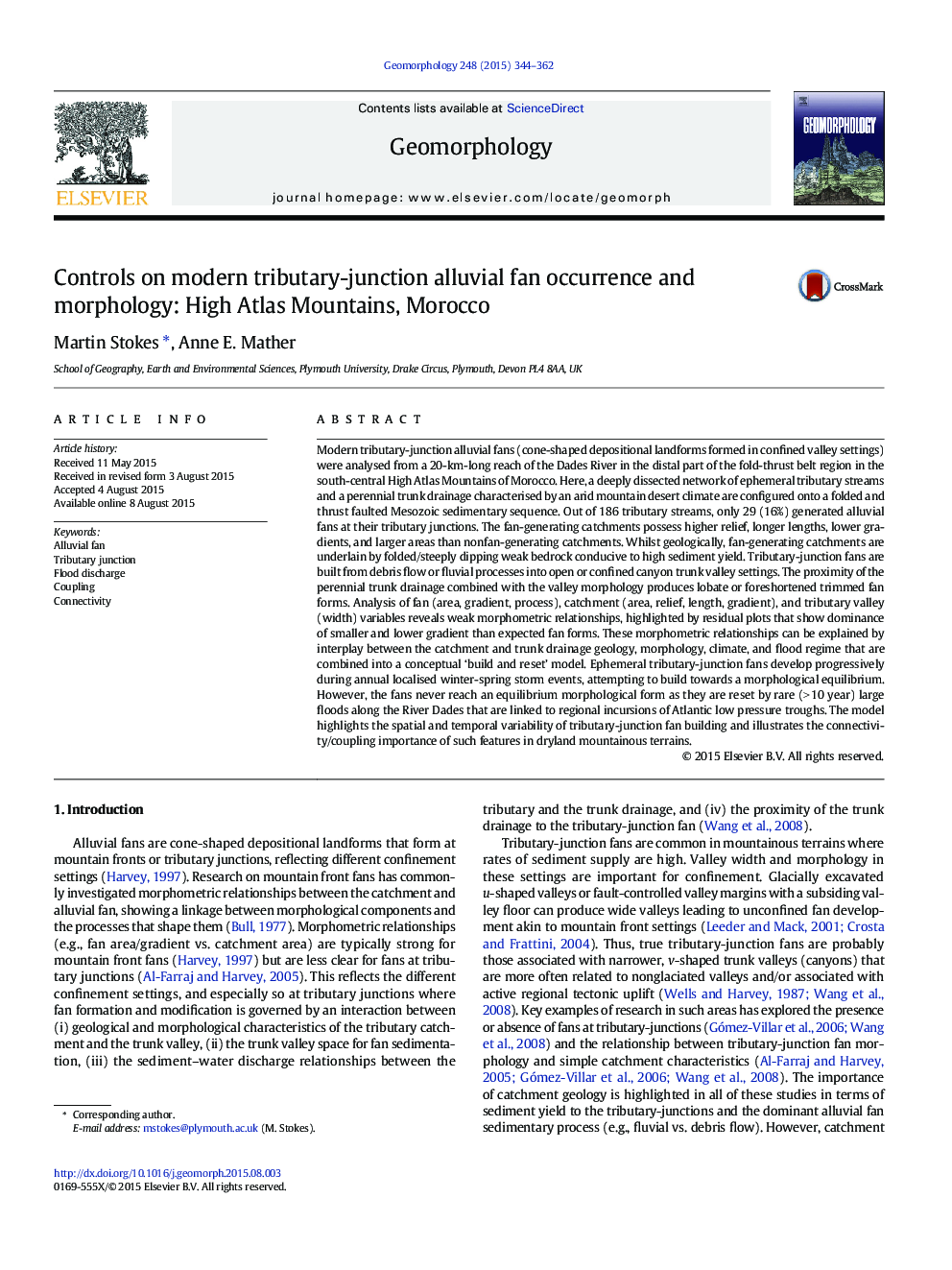| کد مقاله | کد نشریه | سال انتشار | مقاله انگلیسی | نسخه تمام متن |
|---|---|---|---|---|
| 6432079 | 1635401 | 2015 | 19 صفحه PDF | دانلود رایگان |
Modern tributary-junction alluvial fans (cone-shaped depositional landforms formed in confined valley settings) were analysed from a 20-km-long reach of the Dades River in the distal part of the fold-thrust belt region in the south-central High Atlas Mountains of Morocco. Here, a deeply dissected network of ephemeral tributary streams and a perennial trunk drainage characterised by an arid mountain desert climate are configured onto a folded and thrust faulted Mesozoic sedimentary sequence. Out of 186 tributary streams, only 29 (16%) generated alluvial fans at their tributary junctions. The fan-generating catchments possess higher relief, longer lengths, lower gradients, and larger areas than nonfan-generating catchments. Whilst geologically, fan-generating catchments are underlain by folded/steeply dipping weak bedrock conducive to high sediment yield. Tributary-junction fans are built from debris flow or fluvial processes into open or confined canyon trunk valley settings. The proximity of the perennial trunk drainage combined with the valley morphology produces lobate or foreshortened trimmed fan forms. Analysis of fan (area, gradient, process), catchment (area, relief, length, gradient), and tributary valley (width) variables reveals weak morphometric relationships, highlighted by residual plots that show dominance of smaller and lower gradient than expected fan forms. These morphometric relationships can be explained by interplay between the catchment and trunk drainage geology, morphology, climate, and flood regime that are combined into a conceptual 'build and reset' model. Ephemeral tributary-junction fans develop progressively during annual localised winter-spring storm events, attempting to build towards a morphological equilibrium. However, the fans never reach an equilibrium morphological form as they are reset by rare (>Â 10Â year) large floods along the River Dades that are linked to regional incursions of Atlantic low pressure troughs. The model highlights the spatial and temporal variability of tributary-junction fan building and illustrates the connectivity/coupling importance of such features in dryland mountainous terrains.
Journal: Geomorphology - Volume 248, 1 November 2015, Pages 344-362
